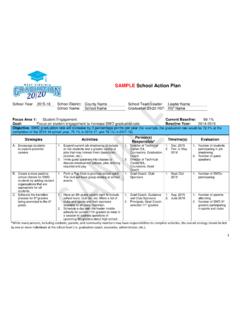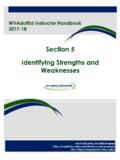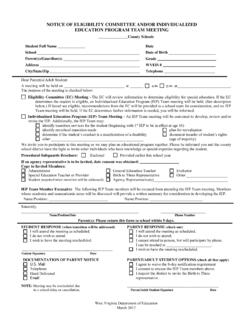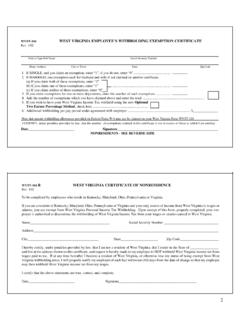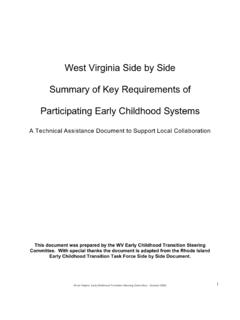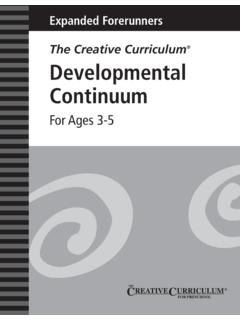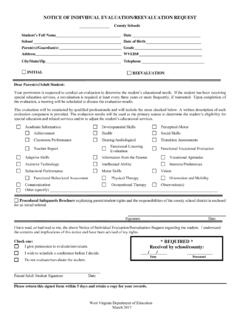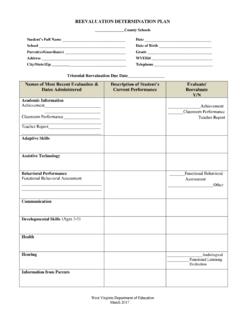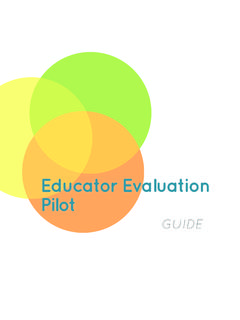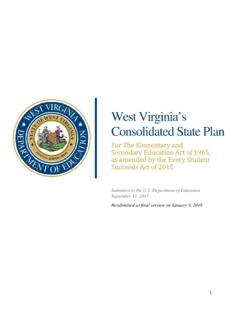Transcription of 6 Essential Characteristics of a PLC
1 6 Essential Characteristics of a PLC (adapted from Learning by Doing) 1. Shared mission, vision, values, goals Educators in a PLC benefit from clarity regarding their shared purpose, a common understanding of the school they are trying to create, collective communities to help move the school in the desired direction, and specific, measurable, attainable, results oriented, and time bound (SMART) goals to mark their progress. 2. Collaborative teams focused on learning In a PLC, educators work together interdependently in collaborative teams to achieve common goals for which they are mutually accountable.
2 The structure of the school is aligned to ensure teams are provided the time and support Essential to adult learning. Collaboration is a systematic process in which we work together, interdependently, to analyze and impact professional practice in order to improve our individual and collective results. 3. Collective inquiry Teams in a PLC relentlessly question the status quo, seek new methods of teaching and learning, test the methods, and then reflect on the results. Building shared knowledge of both current reality and best practice is an Essential part of each team s decision making process.
3 4. Action orientation and experimentation Members of a PLC constantly turn their learning and insights into action. They recognize the importance of engagement and experience in learning and in testing new ideas. They learn by doing. 5. Commitment to Continuous improvement Not content with the status quo, members of a PLC constantly seek better ways to achieve mutual goals and accomplish their fundamental purpose of learning for all. All teams engage in an ongoing cycle of: Gathering evidence of current levels of student learning Developing strategies and ideas to build on strengths and address weaknesses in that learning Implementing the strategies and ideas Analyzing the impact of the changes to discover what was effective and what was not Applying the new knowledge in the next cycle of continuous improvement 6.
4 Results orientation Educators in a PLC assess their efforts on the basis of tangible results. They are hungry for evidence of student learning and use that evidence to inform and improve their practice. The success of the PLC concept depends not on the merits of the concept itself, but on the most important element in the improvement of any school the commitment and persistence of the educators within it. Richard DuFour PLC Day 1 Kim Bailey - Solution Tree1 Learning by Doing 2006, 2010 Solution Tree Press solution-tree comVisit to download this page REPRoDuCibLE | 137 Comments to the Facilitator: This activity will enable a group to develop a set of operating norms or ground rules.
5 In existing groups, anonymity will help ensure that everyone is able to express their ideas freely. For this reason, it is Essential to provide pens or pencils or to ask that everyone use the same type of writing : Index cards, pens or pencils, poster paper, display board, tape, tacksTime: Two hoursDirections1. Explain to the group that effective groups generally have a set of norms that govern individual behavior, facilitate the work of the group, and enable the group to accom-plish its Provide examples of Recommend to the group that it establish a set of norms: To ensure that all individuals have the opportunity to contribute in the meeting; To increase productivity and effectiveness.
6 And To facilitate the achievement of its Give five index cards and the same kind of writing tool to each person in the Ask each person to reflect on and record behaviors they consider ideal behaviors for a group. Ask them to write one idea on each of their cards. Time: 10 Shuffle all the cards together. Every effort should be made to provide anonymity for individuals, especially if the group has worked together Turn cards face up and read each card aloud. Allow time for the group members to discuss each idea. Tape or tack each card to a display board so that all group mem-bers can see it.
7 As each card is read aloud, ask the group to determine if it is similar to another idea that already has been expressed. Cards with similar ideas should be grouped When all of the cards have been sorted, ask the group to write the norm suggested by each group of cards. Have one group member record these new norms on a large sheet of Review the proposed norms with the group. Determine whether the group can sup-port the norms before the group adopts with permission of the National Staff Development Council, , 2006. All rights reserved.
8 Adapted from Tools for Change Workshops by Robby Champion. Oxford, OH: National Staff Development Council, 1 of 2 Developing NormsPLC Day 1 Kim Bailey - Solution Tree2138 | REPRoDuCibLELearning by Doing 2006, 2010 Solution Tree Press solution-tree comVisit to download this page When Establishing Norms, Consider:Proposed NormTime When do we meet? Will we set a beginning and ending time? Will we start and end on time?Listening How will we encourage listening? How will we discourage interrupting?Confidentiality Will the meetings be open?
9 Will what we say in the meeting be held in confidence? What can be said after the meeting?Decision Making How will we make decisions? Are we an advisory or a decision-making body? Will we reach decisions by consensus? How will we deal with conflicts?Participation How will we encourage everyone s participation? Will we have an attendance policy?Expectations What do we expect from members? Are there requirements for participation?Used with permission of the National Staff Development Council, www nsdc org, 2006 All rights reserved From Keys to Successful Meetings by Stephanie Hirsh, Ann Delehant, and Sherry Sparks Oxford, OH: National Staff Development Council, 1994 Page 2 of 2 PLC Day 1 Kim Bailey - Solution Tree344 | REPRoDuCibLELearning by Doing 2006, 2010 Solution Tree Press solution-tree comVisit to download this page The Professional Learning Communities at Work Continuum: Laying the FoundationDIRECTIONS.
10 Individually, silently, and honestly assess the current reality of your school s implementation of each indicator listed in the left column. Consider what evidence or anecdotes support your assessment. This form may also be used to assess district or team implementation. We have a clear sense of our collective purpose, the school we are attempting to create to achieve that purpose, the commitments we must make and honor to become that school, and the specific goals that will help monitor our MissionIt is evident that learning for all is our core purpose of the school has not been articulated.
